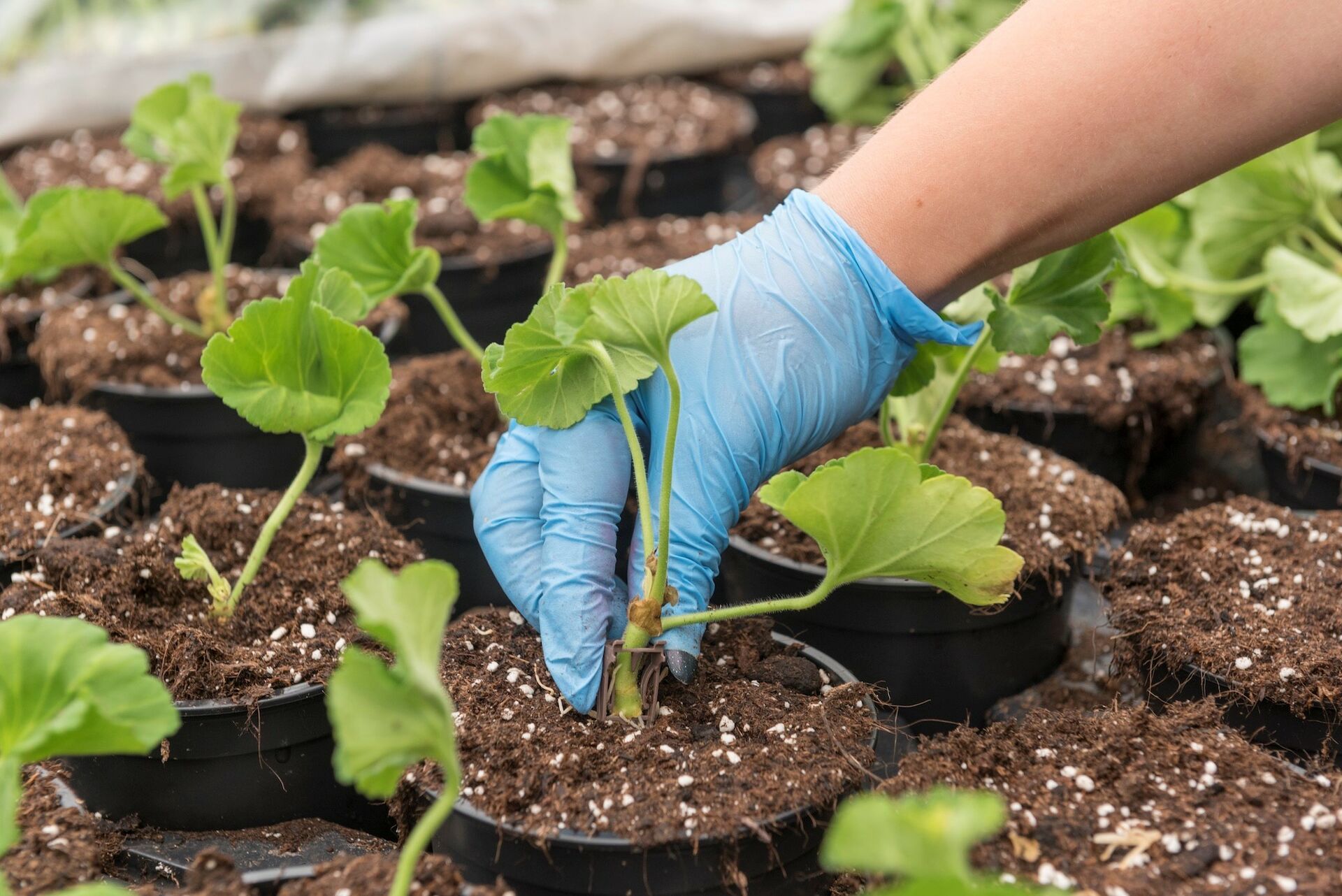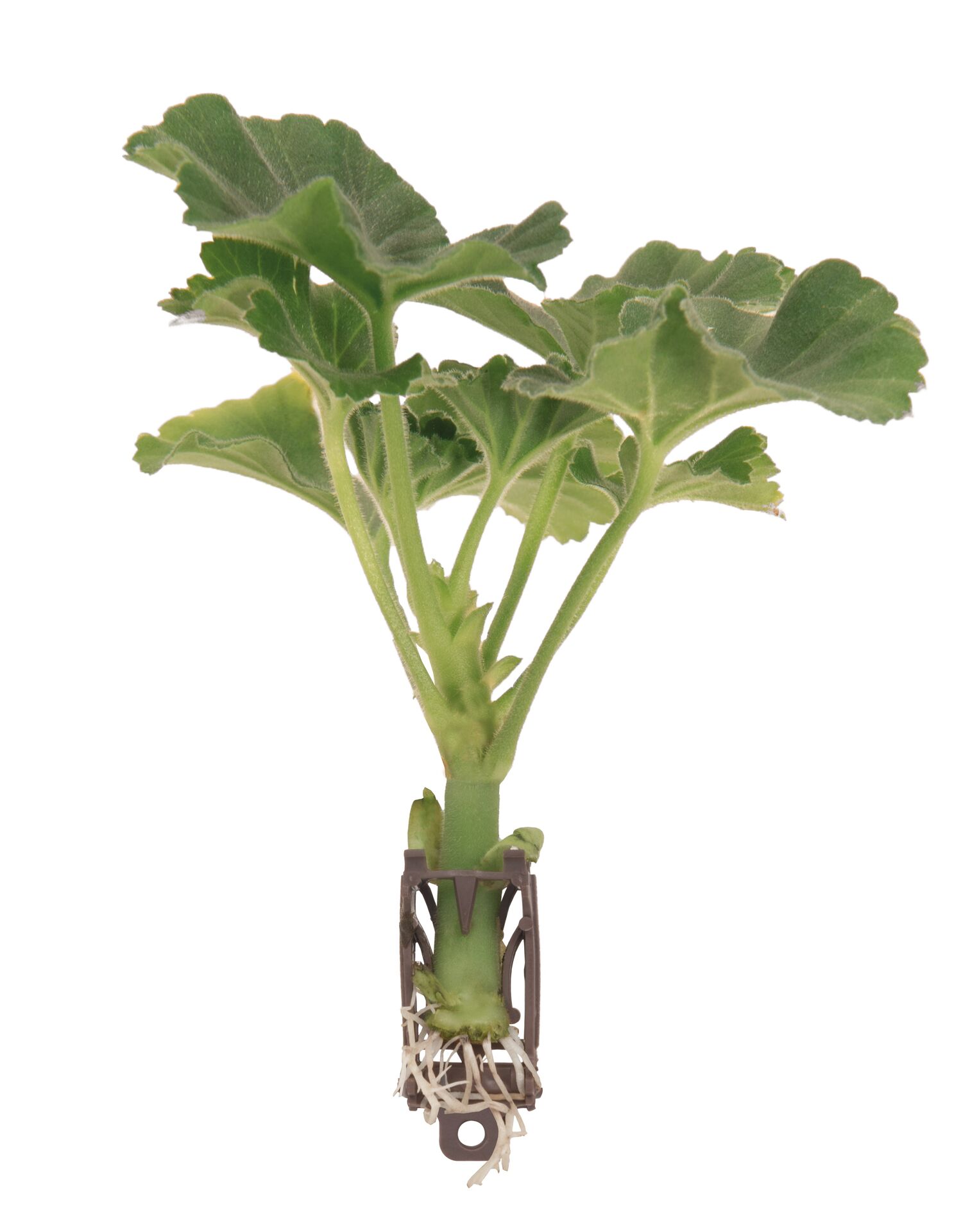
BRANDED CONTENT – There’s a new way to root cuttings without the use of a growth medium, and it sure looks promising. This technique, Basewell, could help growers save on labour and costs. Dümmen Orange has welcomed the system with open arms and is now conducting all sorts of tests in order to make Basewell as efficient as possible.
In the coming years, the scarcity of labour will become a problem for the whole of horticulture. At the moment, it’s mainly schooled personnel that’s hard to find, but there’ll come a time that manual, unschooled labour will be hard to come by as well. This prospect has stimulated the innovation process in no small way. And we’re not talking just about automation, but the most basic processes are being re-examined as well. As a result, Basewell has emerged.
„Visser Horti Systems has invented a strip with containers in which cuttings can take root without the use of a growth medium. It’s to be used with their own planting machine, the AutoStix, that subsequently is able to plant out the separate containers with ease. As a propagation company, we immediately saw the benefits and possible uses of this innovative system, even for those that haven’t automatised the planting process”, sales manager Tristian Bentvelsen of Dümmen Orange states.
The Basewell system consists either of a strip with fixed containers, set close to each other, or a strip with loose containers. These receptacles are made of potato starch and will dissolve in the growth medium within twelve weeks.
Taking root without soil
The cuttings have to be placed in the receptacles manually. There, they will take root without the use of soil or other growth medium, but with the aid of a high humidity. Bentvelsen: „Pelargonium for instance takes 16 to 18 days to root, while it usually takes about 26 days.” And this speeding up of the process is just one of the advantages, he says. A large-scale introduction of Basewell will lead to fewer transport movements, an increased efficiency and significant cost savings, Bentvelsen predicts.
„The current process is as follows. From the production location (e.g. in Ethiopia) the cuttings are transported to a grower or a rooting station. There the cuttings take root, after which they are moved on to the client. But if we use Basewell, we can send rooted cuttings from the production location directly to the client in, for instance, Europe. That’s a lot cheaper. „And what they call the callus cuttings take less time too”, he says.
Moreover, the cuttings in the strips with containers take up very little space. Bentvelsen: „As it is, we can fit 4,000 cuttings onto a trolley, but with Basewell that number will be multiplied. That means transport costs will go down.”
The ultimate dream is to get cuttings to take root while they’re in a shipping container. Transport by boat is much cheaper than airfreight. After the journey, the cuttings would arrive fully rooted. For now, this is just a dream. The shipping container would have to be severely adapted to get the climatic conditions and perhaps the lighting just right.
Many options
The new technique is very much still a work in progress and Dümmen Orange is looking at all options to further improve upon it. Bentvelsen: „We’re not planning to keep this technique to ourselves, for it would be beneficial to all if it were to become the new standard. For a grower of ornamental plants the benefits would be: cost savings, more uniformity in the cuttings, and the option to outsource, without drawbacks, this part of the production. The Basewell cuttings can subsequently be planted out by hand or by machine.” For growers that produce their own cuttings the advantages are not that big, for now, but that could change. Basewell could cut costs for a grower that puts his cuttings into plugs first and plants them out later.
Every month, new discoveries are made. „For instance, we noticed that the uniformity was improved because the people that put the cuttings in the containers unwittingly started selecting them by height. And you can stimulate that development even further.”
Another discovery is that it’s beneficial to cover the bare roots with a gel. This gel protects the roots during transport. Now other possible uses of this gel are being investigated. Yet other things that are being looked at are how many full-grown leaves a young plant should have, and if stock plants should perhaps be cultivated in a slightly different way to get even more uniform cuttings that fit the system even better.
New way of working
Every new technique demands a new way of working, and Basewell is no different. „You have to process the young plants as soon as they arrive. After you planted them out, you need to water them so the soil or other growth medium will fully envelop the roots. Also, it is recommended you provide enough shade and fogging in the early stages”, Bentvelsen states.
Up till now, trials have been conducted with pelargonium, petunia, verbena, calibrachoa, osteospermum and coleus. This list is expanding by the day. Some plants seem to fit the system better than others, but sometimes a slight adjustment of the containers is enough to smooth things over. When it comes to chrysanthemums (for use as cut flowers), the old system of putting cuttings in compressed blocks of soil seems more effective. Still, Dümmen Orange is working hard to improve the new system, so things might eventually change.
Smaller is better
Basewell is a new technique, and the market will have to get used to certain aspects of that technique. The plants are smaller than usual, for instance. That’s no wonder, for as they rooted so rapidly, they are about ten days younger than before. Bentvelsen: „But tests show that after three weeks they’re just as big as plants that were rooted in the traditional way.”
At the moment, small-scale experiments are being carried out all over Europe and North America. Before long the first Dutch grower will receive a large shipment of Basewell cuttings that he will grow into mature plants. The moment of truth. Bentvelsen has every confidence, based on the positive outcomes of the tests so far, that Basewell used on a large scale will certainly prove to have its advantages.










